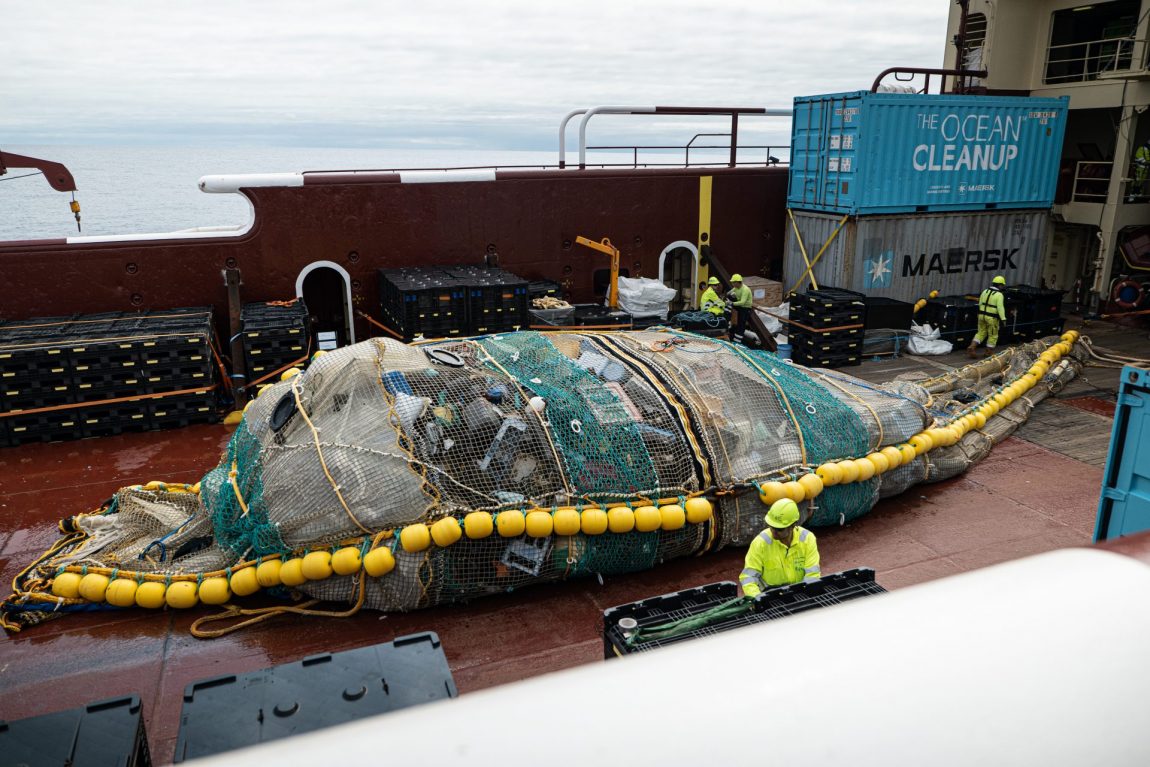
The Ocean Cleanup Project Takes a Bite
As they say at the airport, “If you see something, say something.” Even better, do something. Stories of the Great Pacific Garbage Patch (GPGP) have been circulating since it was ‘discovered’ by Charles Moore and his environmental organization, the Algalita Marine Research Foundation out of Long Beach, CA. The GPGP had started forming decades before. While organizations like The Story of Stuff in Berkeley, CA, are working to reduce the flow of plastics into the ocean, Mary Crowley of Ocean Voyages Institute in Sausalito has been successfully removing plastics with Project Kaisei, as has Boyan Slat’s Ocean Cleanup Project, based in Alameda, CA.
The video shows the results from this past August, when the Ocean Cleanup Project launched its System 002 or “Jenny” to be dragged through the Great Pacific Garbage Patch. It’s taken years of research and testing, with systems being dragged from their base in Alameda out through the Golden Gate to test and refine the ocean plastics removal system. The first haul is the proverbial drop in the bucket, but, as the Dalai Lama says, “Just as ripples spread out when a single pebble is dropped into water, the actions of individuals can have far-reaching effects.”
The Ocean Cleanup says it pulled 20,000 pounds of plastic out of the ocean in just 12 days. It’s a start on a project that they say will clean up 90% of the Great Pacific Garbage Patch by 2040. Which, if you think about it, is only 19 years away and a lot less time than it took to create the patch. The plastics will be returned to land with the hopes of recycling whatever is possible.

But to clarify, Slat says, “The word ‘patch’ is a bit of a misnomer. These accumulation zones are not islands of tightly packed trash, as they are sometimes portrayed in news reports. If only this were the case — cleanup would be so much easier! Instead, the trash is spread out over vast areas. In the GPGP, the average density of plastic is roughly the weight of one soccer ball for every soccer field worth of ocean; not exactly close to something you can walk on.”
Slat goes on to say, “If I could choose, I’d rather catch plastic with Interceptors in rivers than with ocean cleanup systems. Unfortunately, it’s too late for the hundreds of millions of kilos of trash that already pollute the ocean today.”
The efforts of Slat’s Ocean Cleanup Project, Crowley’s Project Kaisei, and The Story of Stuff are a reminder that individuals and organizations up and down the California coast are finding ways both to help prevent plastics from getting into the ocean in the first place, and to clean up what’s already there. Another help would be if we could remember to get folks not to give us plastic dinnerware with our takeout.

Is there any discussion of getting local cleanup groups involved in getting more plastic trash out of our local waterways feeding SF Bay?